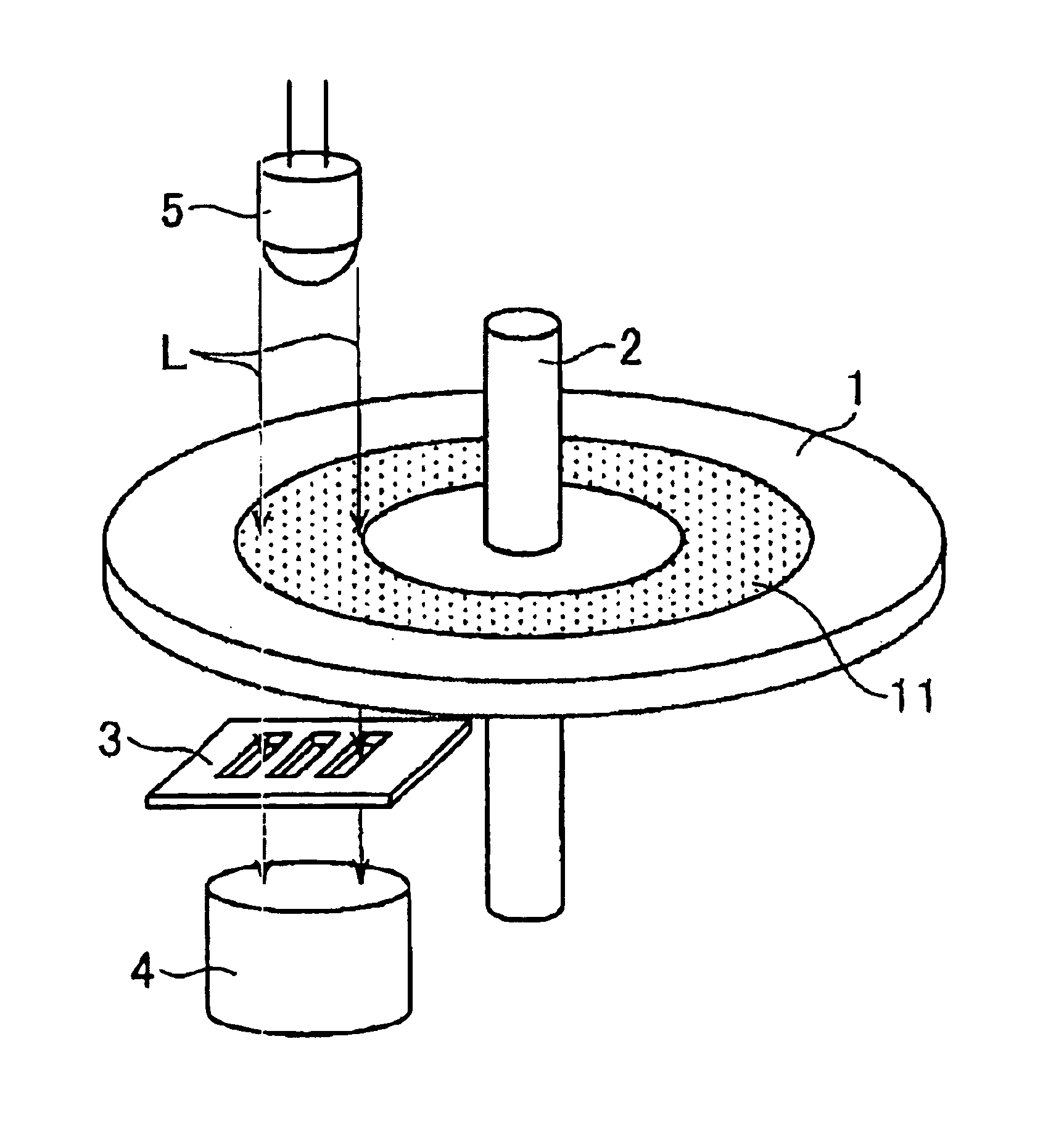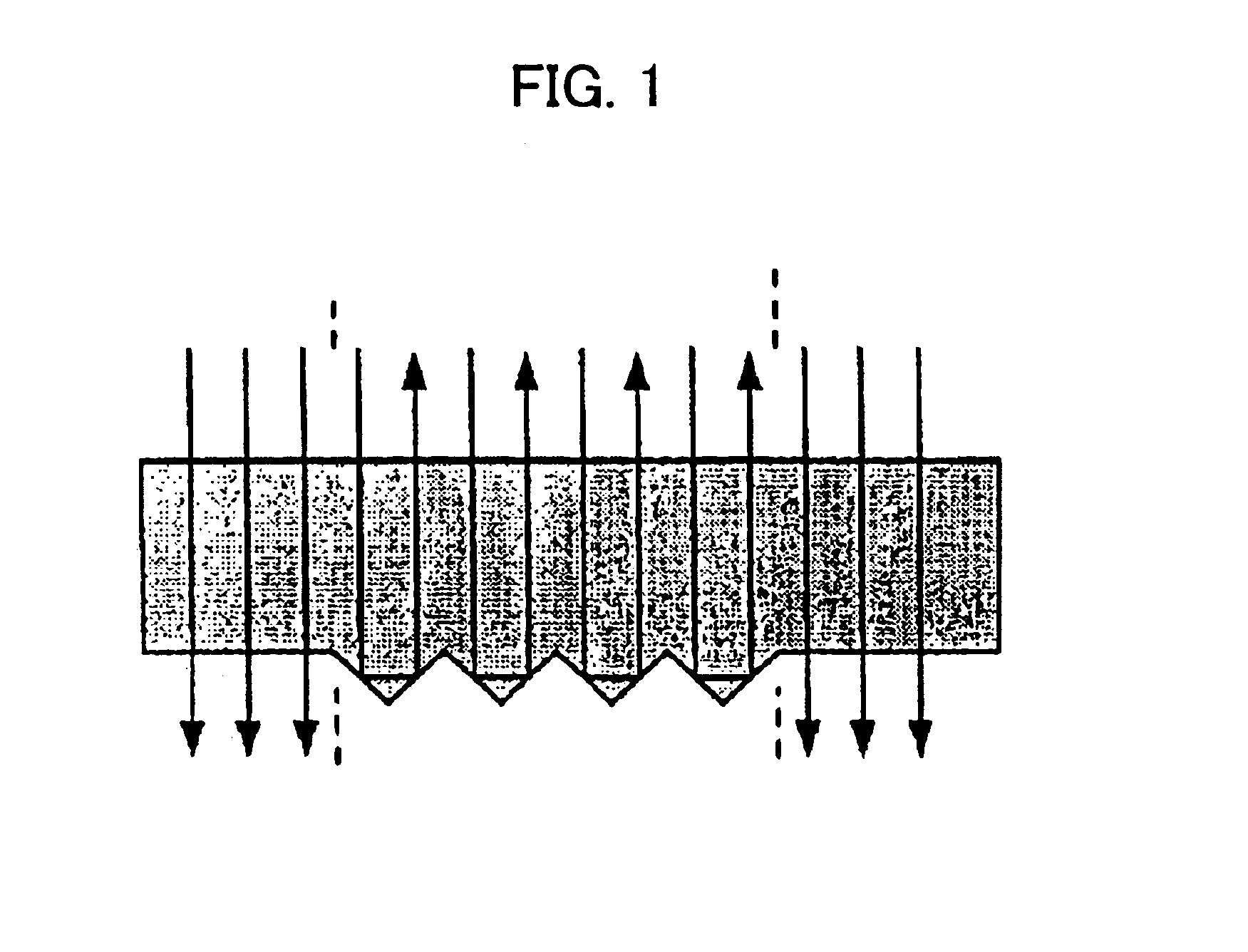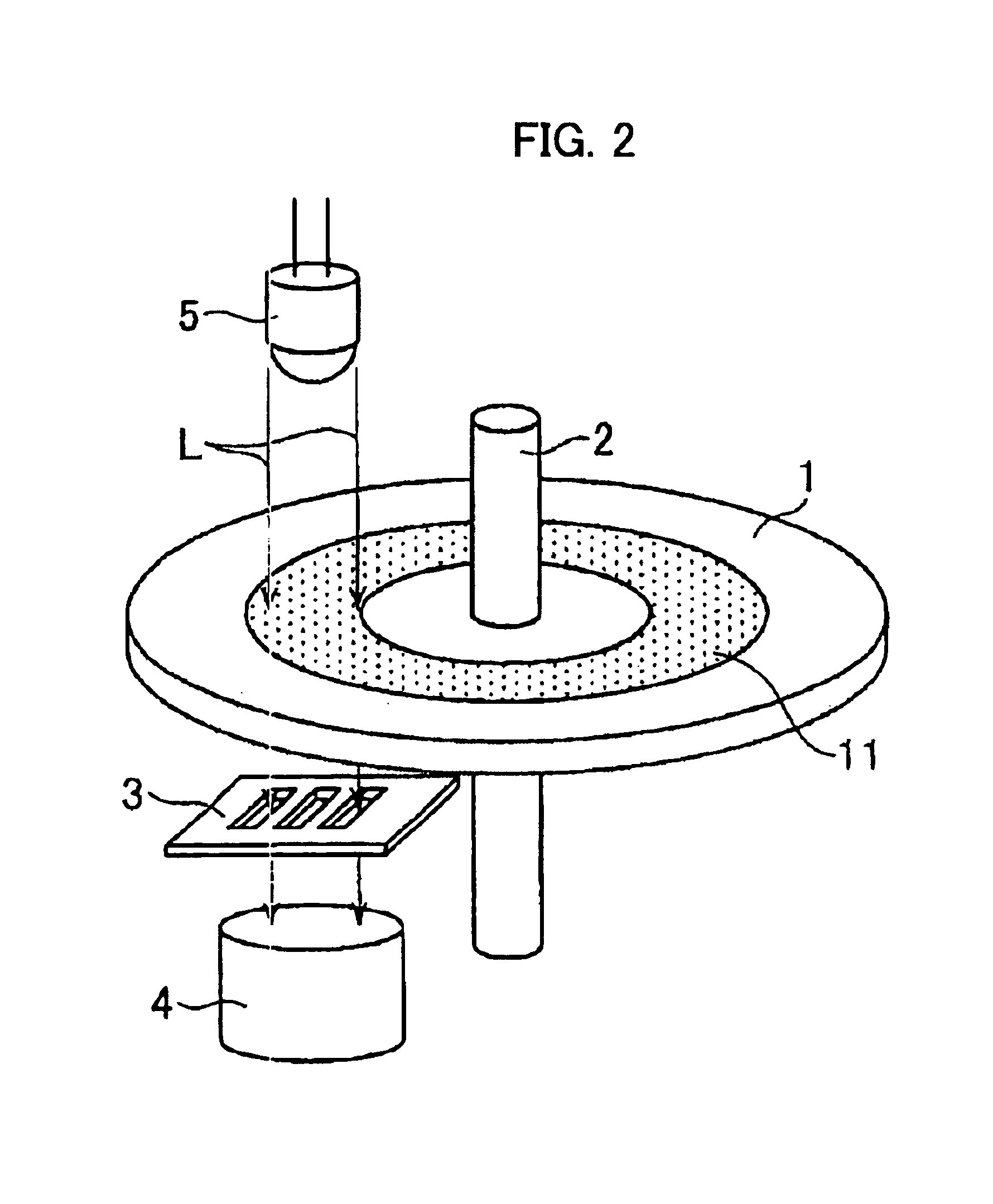Optical encoder
a technology of optical encoder and encoder, which is applied in the direction of coding, pulse technique, instruments, etc., can solve the problems of great disadvantage in heat resistance and oil resistance, large disadvantage in oil resistance (resistance to oily substances), and achieve excellent resistance to high-temperature steam
- Summary
- Abstract
- Description
- Claims
- Application Information
AI Technical Summary
Benefits of technology
Problems solved by technology
Method used
Image
Examples
Embodiment Construction
[0024]FIG. 2 is a schematic view showing one embodiment of a construction of an optical encoder to which the present invention is applied. As illustrated in FIG. 2, the optical encoder according to this embodiment is a rotary encoder comprising a code plate 1, a rotary shaft 2, a fixed slit member 3, a light-receiving unit 4, and a light-emitting unit 5 as basic components. In the light-emitting unit 5, one or more light-emitting elements, and if necessary, a lens and the like for parallelization of a beam are provided. As a light-emitting element, an infrared LED having emission wavelengths in an 800 to 1000 nm range is applied herein. The code plate 1 is provided with a code pattern having the after-mentioned aspect. The code plate 1, which is mounted on the rotary shaft 2, is so positioned that the code pattern thereof constantly intervenes between the light-emitting unit 5 and the light-receiving unit 4.
[0025]Infrared light which is supplied from the light-emitting unit 5 is mod...
PUM
 Login to View More
Login to View More Abstract
Description
Claims
Application Information
 Login to View More
Login to View More - R&D
- Intellectual Property
- Life Sciences
- Materials
- Tech Scout
- Unparalleled Data Quality
- Higher Quality Content
- 60% Fewer Hallucinations
Browse by: Latest US Patents, China's latest patents, Technical Efficacy Thesaurus, Application Domain, Technology Topic, Popular Technical Reports.
© 2025 PatSnap. All rights reserved.Legal|Privacy policy|Modern Slavery Act Transparency Statement|Sitemap|About US| Contact US: help@patsnap.com



